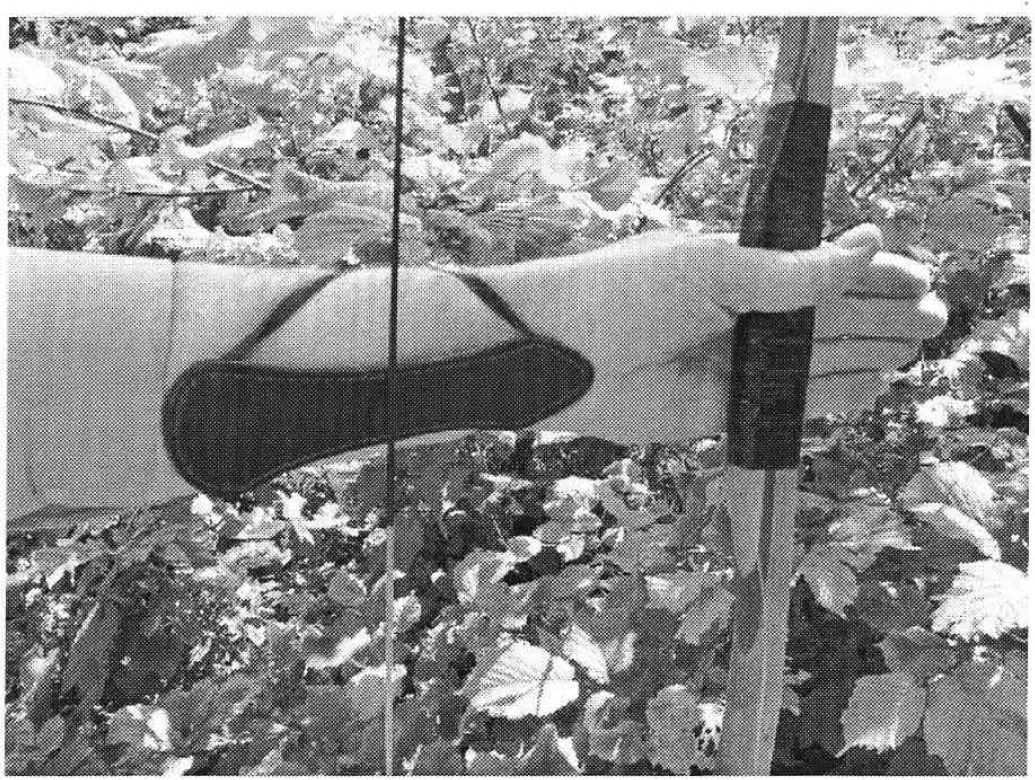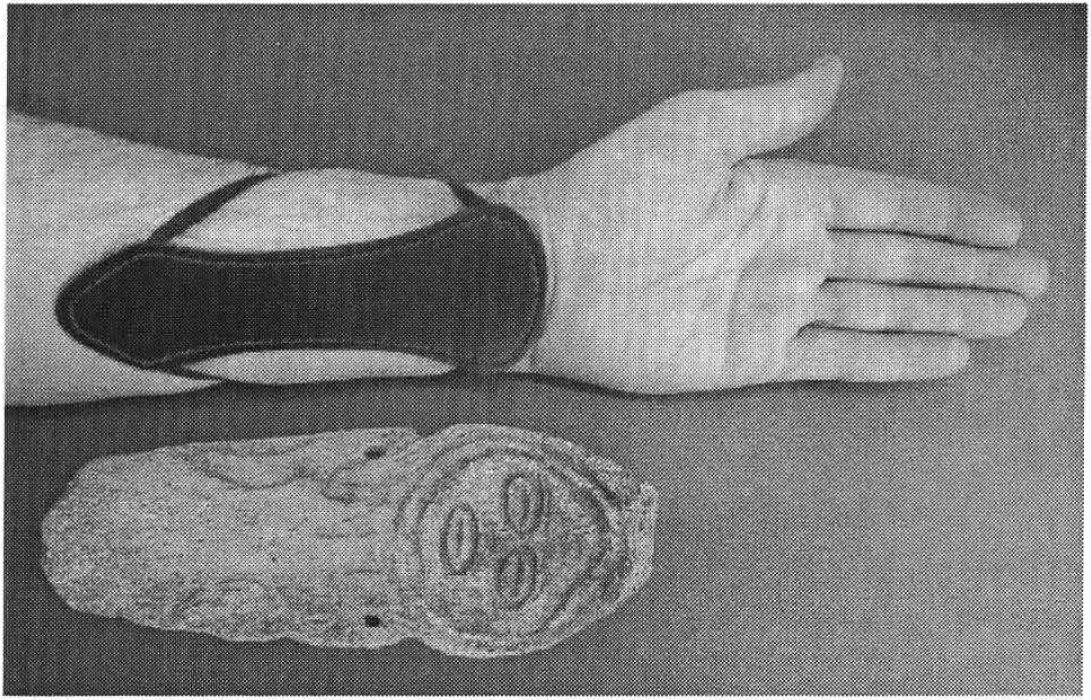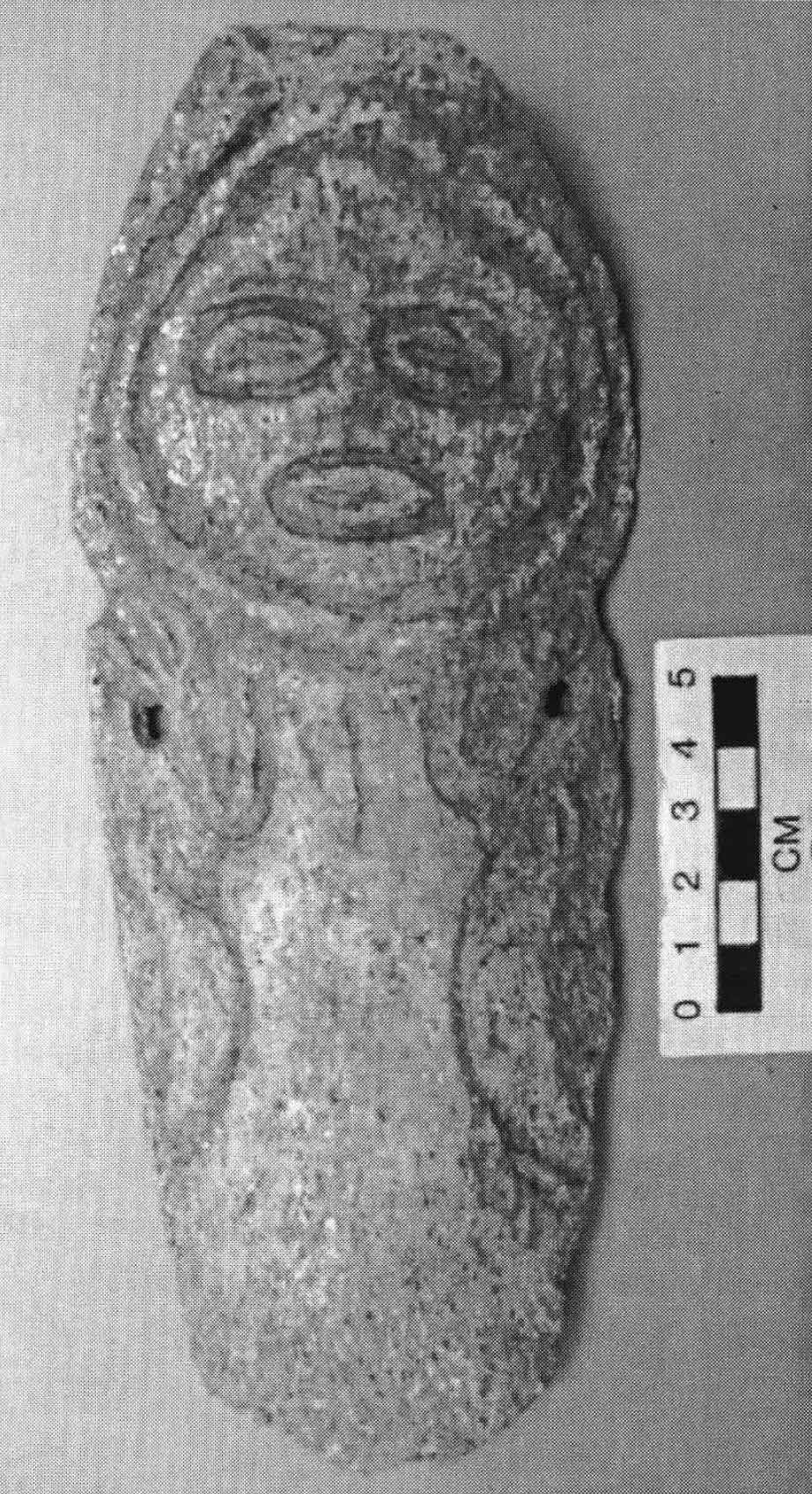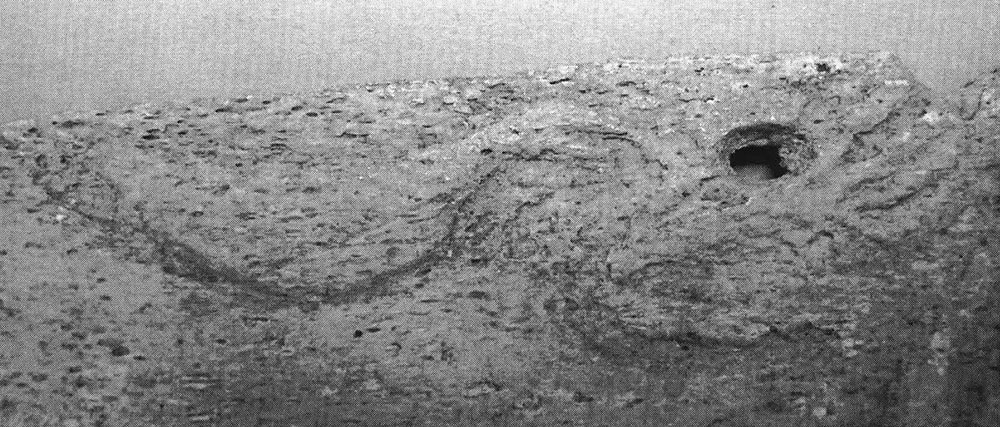Originally published in The Midden, 42(1-2), 12-13.
2010.
By Grant Keddie
This unique artifact from the collection of the Royal B.C. Museum has never been identified.
The 8cm by 21 cm object is made from a thin one-centimetre piece of whalebone. Dr. Charles Newcombe found the artifact (DcRu-32:22) in 1914, during the construction of the Ogden Point breakwater at the entrance to Victoria’s Outer harbour. An archaeological shell midden (DcRu32), which now lies buried under Dallas Road, was once the location of a small village site at the head of the now filled in Ogden Bay. The small assemble of artifacts, which includes bone tools made using an iron file, and the lack of any oral tradition or other historic documentation of a village here, suggests the site was likely occupied around 200 to 500 years ago.
The carved design shows a human figure with hands held in front and two bird figures on each side.
The hands each have four thin, bird-like fingers. The raised area around the head may suggest the figure is wearing some kind of hood-like head piece – maybe one of the water proof bird skin capes refered to in oral traditon? The back of the artifact is not carved, but has slight recesses around the holes and across the area between them. The meaning of the design is unknown. Possibly it represents an ancestral figure that ensured the wearer good luck in bird hunting.
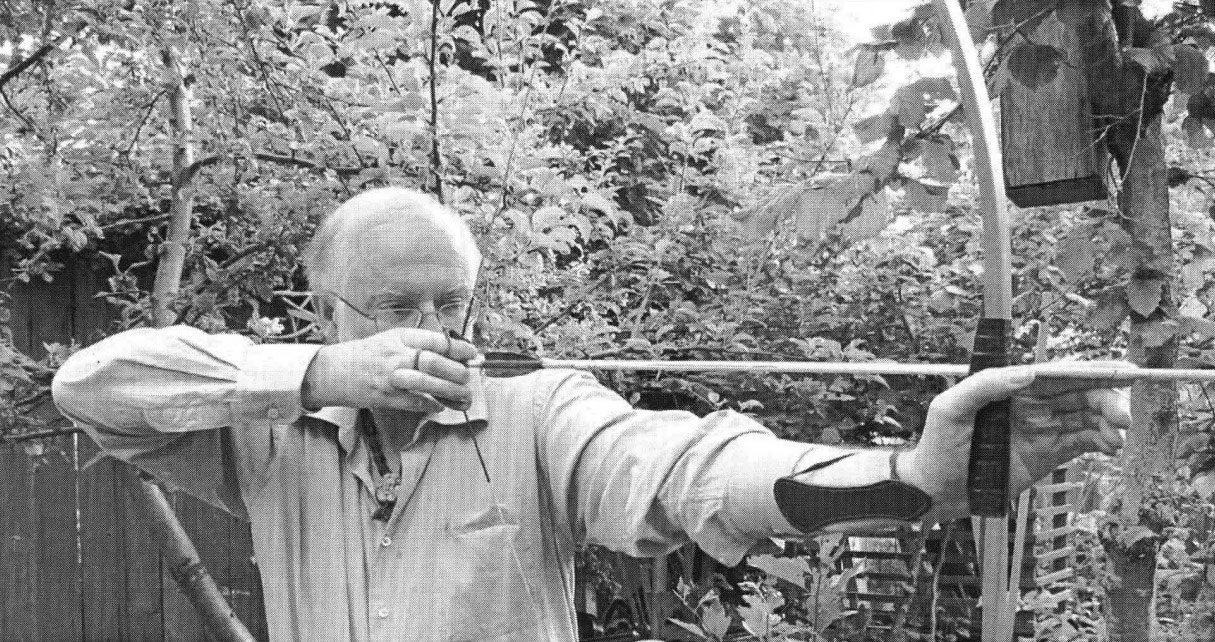
I propose that it was once tied onto the wrist of an archer – to guard his arm from being cut by a bowstring. I base this assumption on my personal experience as an archer and the similarity of this item to known wrist guards found in cultures in Siberia and Alaska.
